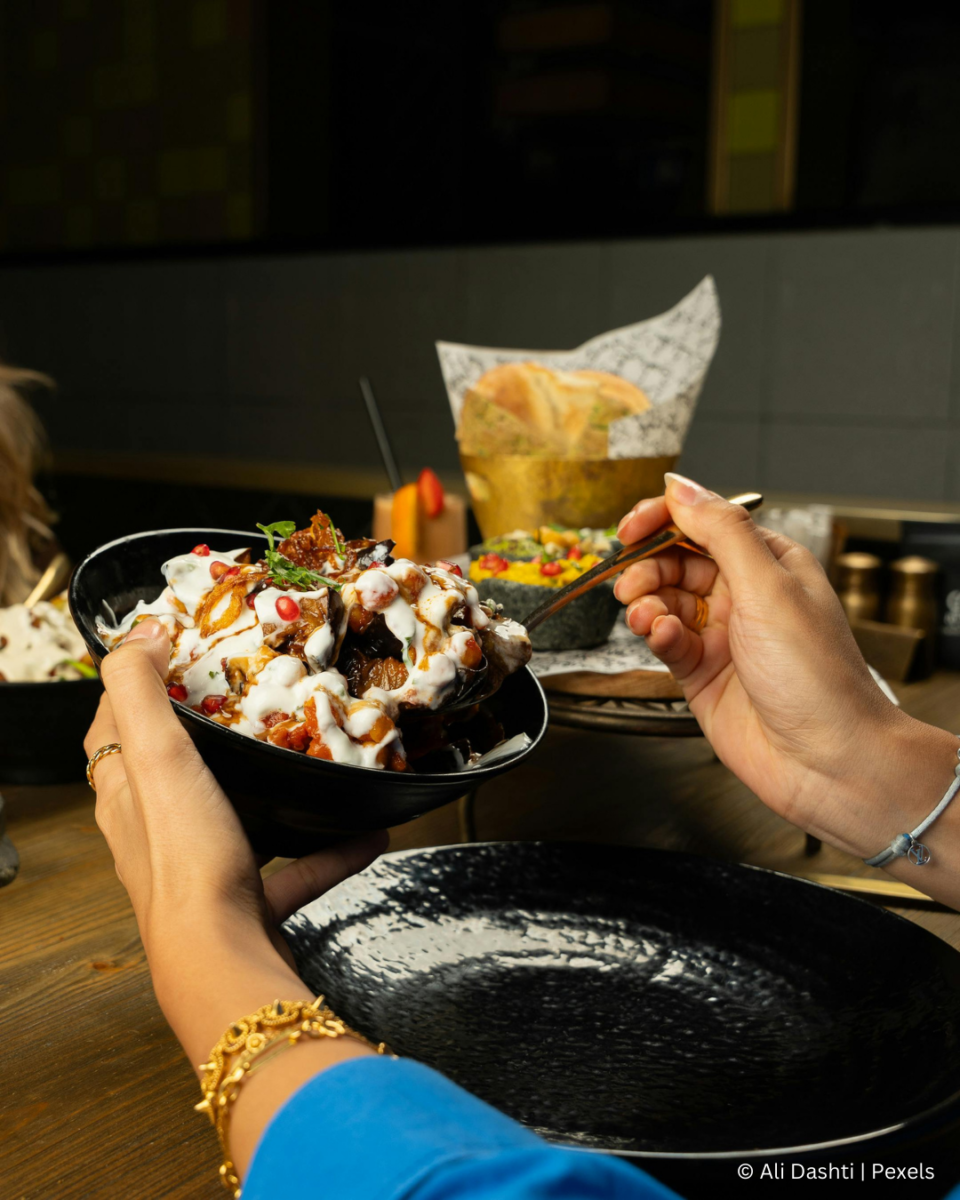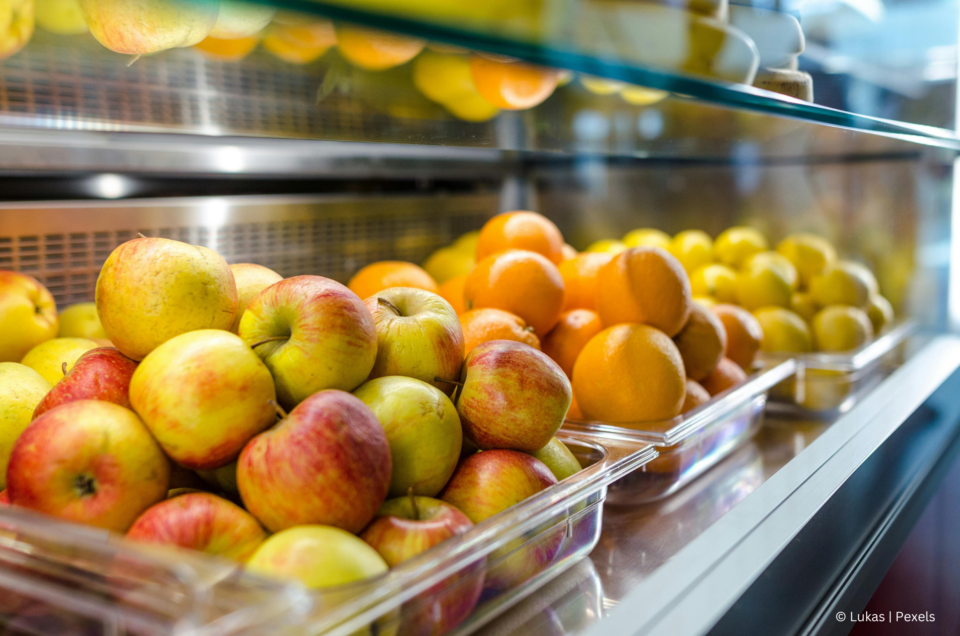The author of Food Guide to India and Flavours of Delhi talks about her latest book and evolution of India’s food landscape.
Open social media, and you will find yourself flooded with information about what you should or shouldn’t eat. From busting myths and providing relevant information to scaremongering, the contents often leave you pensive about your food choices. But beyond the visual consumption of food facts, we are also actively changing what we eat. Caught between the pull of all that is new and exciting and the push of what is familiar, our food choices are ever-evolving. Being able to taste different foods at a moment’s notice has enabled us to widen our palates. At the same time, we are also finding ways to incorporate bits and pieces of our history into the contents of our plates. This moment in India’s food landscape is special — filled with adventure and a zeal to rediscover our roots. And if there is one person who can capture this moment on paper, it is culinary explorer, historian and educator Charmaine O’Brien.
In her latest book, ‘Eating The Present, Tasting The Future; Exploring India Through Her Changing Food‘, the Australian writer takes us through the country’s streets, restaurants, supermarkets and homes, exploring the food habits of metropolis India while examining its ripple effects outside the cities.
This is O’Brien’s fourth book on Indian food, and between its pages, she shares not just the country’s dynamic foodways but also her own journey in discovering its culinary heritage. A journey that began almost three decades ago! The growing awareness towards India’s regional foods, the influence of social media, convenience foods and food delivery apps, the hype around superfoods, revival of millets, concerns with healthy eating and changing gender norms — O’Brien tackles these topics and more in 300 odd pages. The comprehensive book includes copious amounts of research and inputs from chefs, restaurateurs, home cooks, writers and other culinary enthusiasts thus capturing the diversity of Indian food and its ongoing evolution.
In this edited interview, Charmaine O’Brien talks about the process of writing this book and what she envisions for India’s food landscape.

TYT: On my way home, just before this interview, I noticed an upscale cafe on one side of the road and a local eatery on the other. Both equally crowded and thriving. This juxtaposition is somewhere central to your book. Could you tell us what inspired the writing of this book and what is your take on India’s current food scenario?
Charmaine O’Brien: I got interested in India’s food in the first place because it belonged to India. It was rooted in the culture and tied to its soil. I understand that some of the important foods are also non-native, like chilies, potatoes and tomatoes. However, several distinctly Indian foods celebrate the country’s culture and date back 1000s of years. I see now that a global layer has intervened in this landscape, which is not distinctive of any place. Most people would say that it is a Western influence and by that, they usually mean the USA. But countries like America and Australia have food systems that are not originally from the place; they are a result of outside influence. That’s the impact of the global layer that has come into India as well. I was sitting in a cafe earlier today, drinking hot chocolate, and I looked around myself and realised that I could be sitting anywhere in the world. There is nothing in here that alerts me to the fact that I am in India.
While this is happening on the one hand, on the other, we are also seeing a growing interest in products like Indian coffee and chocolate. Earlier, coffee produced in India would go into various blends, and it was never distinguished. But now, when I walk into a cafe, they tell me that the beans are from X, Y or Z estate in one of India’s coffee-growing regions. Similarly, there are so many new artisans who are elevating the country’s cacao and making chocolate that truly reflects India. As you mentioned, both these worlds currently exist in India. The new layer of globalisation has not necessarily replaced something. Instead, it seems to be adding more to Indian food and inspiring interesting ideas. I hope that it continues to positively affect the country’s food landscape.
TYT: A large part of your book is dedicated to the influence of supermarkets. Why did you feel the need to explore this aspect in detail?
Charmaine O’Brien: When I want to learn about the food of a place, one of the first things I will do is go to the supermarket or the food store and watch what people are buying and how they are buying food. Changes in domestic food consumption over time reflect the change in a region’s food landscape. You want to know what people are eating in their homes, what they are cooking or not cooking — that’s where the real shift is happening. Of course, restaurants are also a part of this change, but stores provide a window into where people’s food focus is. In urban India, the way people are buying food has changed. Earlier, vegetable and fruit vendors would come by your street, and you would take your bag, interact with them, and buy what you needed. This is convenient and sustainable, and the only better option may be growing your own food. But that is no longer the case, and more people now go to supermarkets/chain food stores to get everything they need.
I also see changes in the way supermarkets engage with their audience. I went back to a supermarket in Bangalore I had visited years ago and saw that the layout had changed entirely. They placed the fruits and vegetables at the front where you first enter, which is what they do in Western supermarkets as well. When I went to the store many years ago, they had bulk foods and specials at the front. These changes are also in line with people’s purchasing behaviours. In the psychology of supermarkets, if people buy their fruits and vegetables first, they feel like they have done a good thing and will reward themselves by buying junk foods. Supermarkets make it possible for you to learn all this and more.

TYT: You have travelled extensively through India, tasting food at popular restaurants and exploring street food and home-cooked meals. Any memorable meals from your travels?
Charmaine O’Brien: There is so much delicious food in India that it would be difficult to pick a few. In Arunachal Pradesh, I got to experience a home-cooked meal where they made a soup called Pasa. The whole family worked on the meal. They gathered a lot of greens and pounded them using a large mortar and pestle, collecting all the green juice. They also chopped raw fish with a bunch of fresh herbs like coriander, mint and other indigenous greens, which they pounded along with aromatics like garlic and ginger. It was almost like the South American dish, ceviche, but then they added the green juice to make a soup that exploded with all these unique flavours. It was unbelievably fresh, tangy and tasty.
While this was an example of a home-cooked delicacy, I remember visiting Sienna Cafe in Kolkata, where I had an incredible meal by Chef Auroni Mookerjee. I don’t say this often about a meal, but it blew me away. What I loved was that the food was tied to the terroir of Bengal, and he had made it so accessible. The cafe is set in a classic suburban house. Every bit of the fish was used in the meal; the cocktail was made using the local lime and tender coconut water. Everything about that spread was just a win, win, win!
I also remember tasting millets for the first time when I ate bajra rotla, along with a tangy and delicious buttermilk. There are many such memorable meals.
TYT: In the book, you write about the visual impact of food. How do you think this will influence our food chronicles?
Charmaine O’Brien: As a writer, I am more interested in thinking and writing about food than watching food-related videos. However, the visual representation of food has increasingly gained momentum. Although I don’t see it changing, people will want something more substantial after a while. Just like it is fascinating to go on a holiday and eat all your meals in a restaurant, but after some time, you long for something more wholesome; it will be the same with visual food consumption. But there will be other trends such as people illustrating their food or finding multi-dimensional ways of documenting what they eat. Let’s see, who knows what the future holds?

TYT: What is the one thing you want people to take away from this book?
Charmaine O’Brien: I want people to look around and see food in its broader context, not just as something on their plate. More importantly, I want people to go out and enjoy the food they eat and not get sucked into the so-called ‘wellness’ aspect of it. It is important for all of us to make healthy food choices, but we cannot let that get in the way of relishing the food we eat. Celebrate your food culture, enjoy novel foods, go out and eat in new restaurants and explore street food. Enjoy all the flavours and cherish what’s on your plate.
Eating the Present, Tasting the Future; Exploring India through Her Changing Food is published by Penguin Random House India. The book is available online and in bookstores across India.
